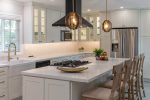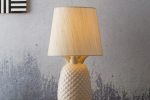Introduction
Scandinavian interior design has become increasingly popular in recent years. Its minimalist and functional approach to design has impacted the way people decorate their homes. This article aims to delve deeper into the principles and characteristics of Scandinavian style.
Origins of Scandinavian Style
Scandinavian design emerged in the 1950s as a blend of simplicity, functionality, and elegance. These styles were influenced by traditional Scandindavian design which emphasized the use of natural materials, making products and objects that would last for years. The social and political environment of the time played a role in shaping the style, as Scandinavian countries economically prospered in the post-World War II period.
Minimalism
The key feature of Scandinavian interiors is minimalism. Minimalism emphasizes simplicity, uncluttered spaces, and functionality. It goes against the trend of maximalism, where rooms are filled with decorative items, color, and patterns.
Color Scheme
The color palette used in Scandinavian interior design is simple and natural, with a focus on light colors such as white, muted shades of grey, and beige. The aim of this color scheme is to create a bright and spacious environment, making rooms feel larger than they are.
Natural Materials
Another important aspect of Scandinavian design is the use of natural materials. Wood is a popular choice as it is a durable and environmentally friendly material. Other materials commonly used are linen, wool, and leather.
Functional Furniture
Scandinavian furniture is characterized by its clean lines, minimal details, and functionality. Chairs and sofas are designed to be comfortable but also to blend seamlessly with the surrounding decor. Storage solutions are an essential aspect of Scandinavian design, making use of versatile and minimalist pieces that free up space in a room.
Lighting
Lighting is another important factor in Scandinavian inspired interiors. Scandinavian countries are dark for much of the year, and so the lighting is critical. Rather than relying on harsh artificial lighting, natural light is utilized to the fullest, and rooms are decorated with light fixtures designed to enhance the natural light.




